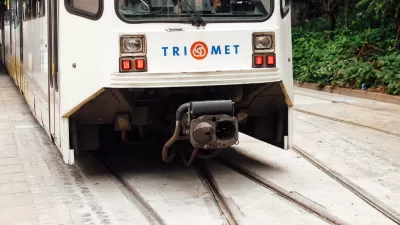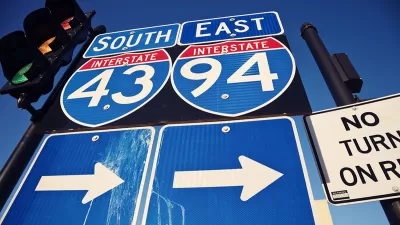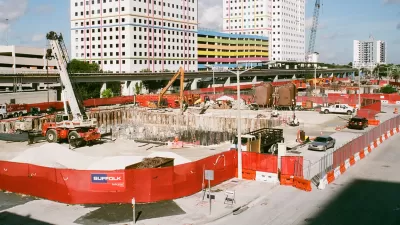Despite some accusations that the federal stimulus funding has not been filtering down to actual transportation projects, work is being done. But the influx of money hasn't been able to revive a flagging construction industry.
"In the past 18 months, Obama's Department of Transportation has committed $38.6 billion to more than 14,600 projects, and the vast majority of them are under way. About 70% of the money is going to highways; the rest is mostly for subways, buses, light rail and other transit projects, plus more than a billion dollars for Amtrak and a similar amount for airports. None of it is going to earmarked projects, and while the impact is not always obvious - most states chose not to erect signs touting the stimulus at construction sites - the work has directly supported an average of 45,800 jobs over the past year, and much more than that over Obama's mocked 'Recovery Summer.' Those jobs, the White House likes to point out, would all disappear if the GOP fulfilled its pledge to cancel the rest of the stimulus."
But as Time reports, the construction industry is still struggling. There is more than 17% unemployment in that sector. Officials argue that it's difficult to get transportation projects started quickly.
FULL STORY: Where Did the Transportation Stimulus Money Go?

Alabama: Trump Terminates Settlements for Black Communities Harmed By Raw Sewage
Trump deemed the landmark civil rights agreement “illegal DEI and environmental justice policy.”

Study: Maui’s Plan to Convert Vacation Rentals to Long-Term Housing Could Cause Nearly $1 Billion Economic Loss
The plan would reduce visitor accommodation by 25% resulting in 1,900 jobs lost.

Why Should We Subsidize Public Transportation?
Many public transit agencies face financial stress due to rising costs, declining fare revenue, and declining subsidies. Transit advocates must provide a strong business case for increasing public transit funding.

Paris Bike Boom Leads to Steep Drop in Air Pollution
The French city’s air quality has improved dramatically in the past 20 years, coinciding with a growth in cycling.

Why Housing Costs More to Build in California Than in Texas
Hard costs like labor and materials combined with ‘soft’ costs such as permitting make building in the San Francisco Bay Area almost three times as costly as in Texas cities.

San Diego County Sees a Rise in Urban Coyotes
San Diego County experiences a rise in urban coyotes, as sightings become prevalent throughout its urban neighbourhoods and surrounding areas.
Urban Design for Planners 1: Software Tools
This six-course series explores essential urban design concepts using open source software and equips planners with the tools they need to participate fully in the urban design process.
Planning for Universal Design
Learn the tools for implementing Universal Design in planning regulations.
Smith Gee Studio
Alamo Area Metropolitan Planning Organization
City of Santa Clarita
Institute for Housing and Urban Development Studies (IHS)
City of Grandview
Harvard GSD Executive Education
Toledo-Lucas County Plan Commissions
Salt Lake City
NYU Wagner Graduate School of Public Service





























